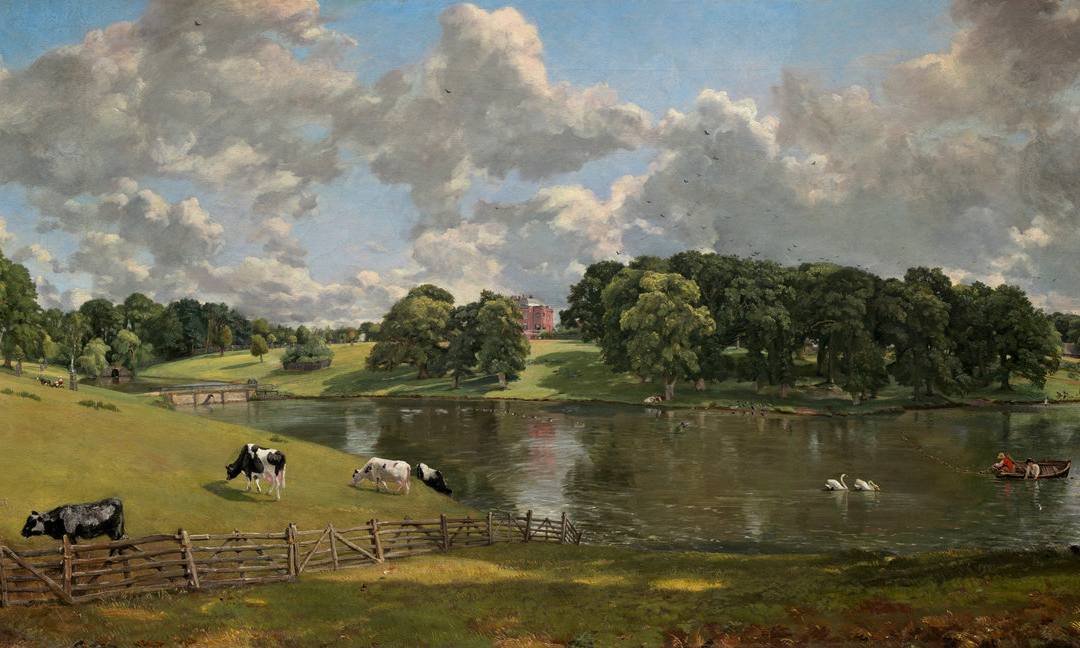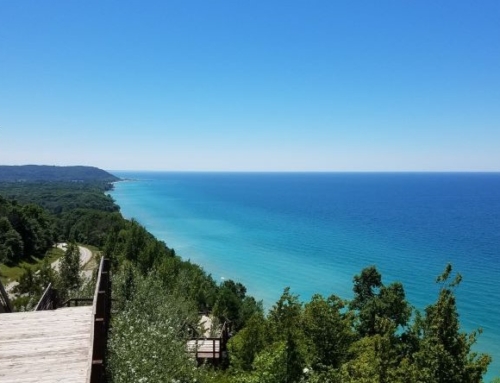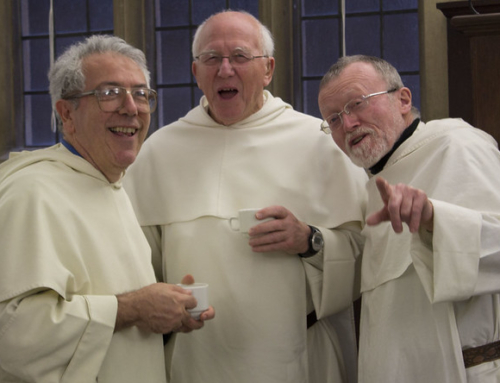What is it that makes landscapes so alluring? Both photos and paintings of landscapes can hold the attention of a viewer for long stretches. This particular one by John Constable, which hangs in the National Gallery of Art in Washington, seems to promise an idyllic experience. Is it the natural beauty of a landscape that captures our attention? Certainly yes, but it is more than that. It is possible to walk or drive by a beautiful scene without being moved. With this painting and others, it is more than the depiction of nature that attracts us–it is the opportunity to contemplate nature as something outside of us, as something not under our control.
What would we think of this estate if we owned it? The homeowner’s eye is quite different than the spectator’s. Would we see needed repairs on the fence or the bridge? Perhaps the position of one of the trees blocks the view from a window in the mansion, and we would want to cut it down. What else would we find dissatisfying? But when we see the scene in a painting, we are not only spectators instead of owners, but viewing a likeness instead of reality. We are at a double remove from any possibility of altering a painted landscape. As viewers we cannot manipulate or change the painting, only enjoy it. In short, a landscape helps even the most restless activist among us become a contemplative.
Trying to improve the scenery is not limited to homeowners. In our technical age, there is a pervasive utilitarian outlook that makes it difficult to contemplate nature. In one of his essays, “The Question concerning Technology,” the German philosopher Martin Heidegger describes this utilitarian outlook. He says that for modern man, a field is more a potential source of energy or minerals than an object of beauty: “The earth now reveals itself as a coal mining district, the soil as a mineral deposit. The field that the peasant formerly cultivated and set in order appears differently than it did when to set in order still meant to take care of and to maintain.”
If Heidegger is right, a landscape painting gives us a different way of seeing reality. The artist shares a way of seeing the natural world as beautiful instead of useful. This is not only an enjoyable experience by itself, but a link to contemplation of the divine. Regarding the beauty of nature without being driven to make use of it provides an opening for bigger questions: Why do I find this scene so beautiful? Where did nature come from? Does all of this depend on a cause that I cannot see? Following the path of these questions leads us to a primordial experience of man as he regards nature. This is the experience that allowed St. Paul confidently to say that since the beginning of the world, God’s “invisible attributes of eternal power and divinity have been able to be understood and perceived in what he has made” (Rom 1:20).
We should not expect that every time we see a landscape painting, we will start thinking of God. But, they do provide the possibility of doing so. In the process, we can learn to regard the whole world around us in a different way. We can try to see with an appreciative eye instead of a utilitarian one. This perspective is one that can be educated and developed, and it is an important part of a Christian outlook on the world. If nature cannot remind us of God, then we live a poor life indeed.
When life seems worn down and all too familiar, try looking at a landscape. Perhaps it will open your eyes to something new.
✠
Image: John Constable, Wivenhoe Park, Essex







